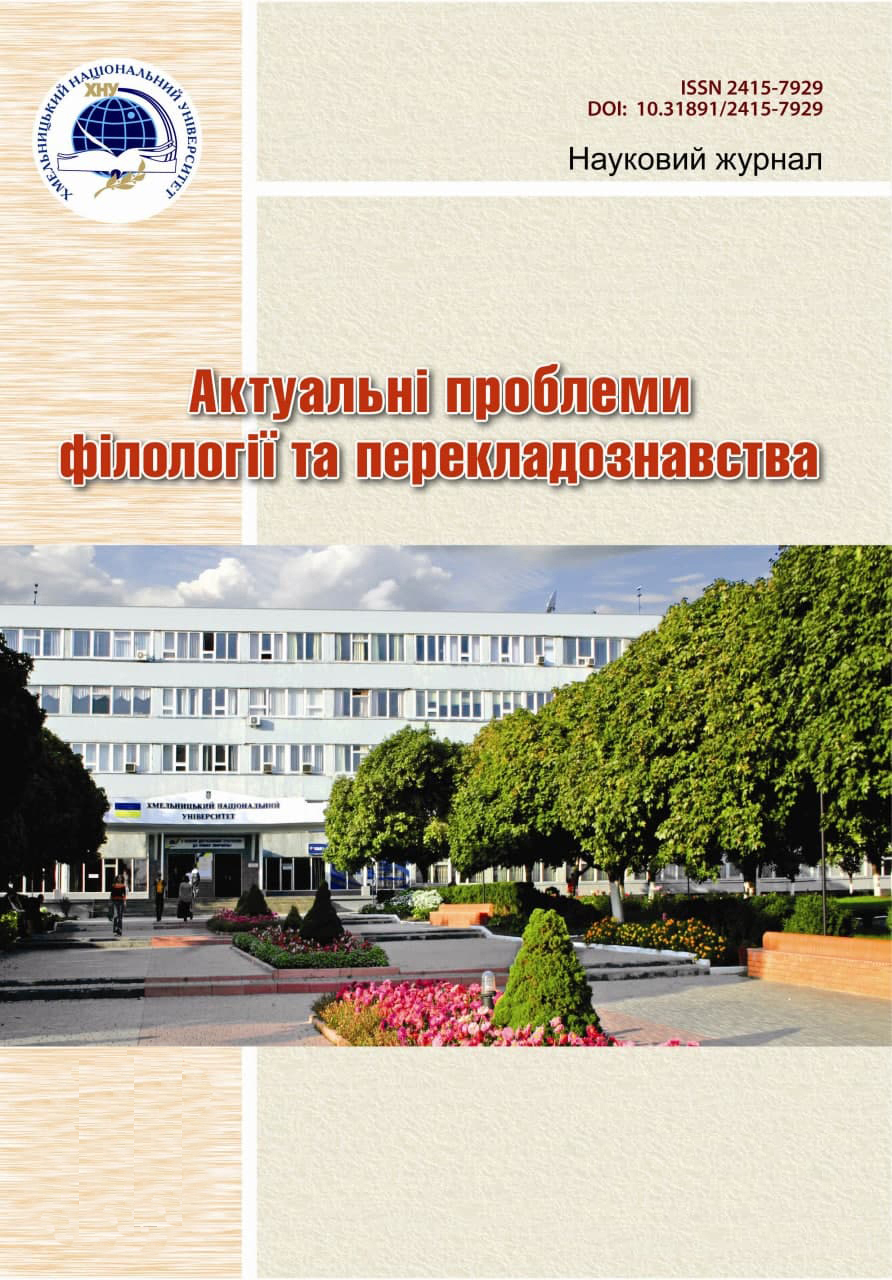THE RENDERING OF HISTORICAL REALIA IN WALTER SCOTT'S NOVELS
DOI:
https://doi.org/10.31891/2415-7929-2020-20-7Keywords:
realia, interpretation/translation, non-equivalent vocabulary, the ways of translation, histirical novelAbstract
The paper describes the theoretical and practical aspects of the non-equivalent vocabulary translation in the literary text. Every language reflects the phenomena and processes taking place in the world, as well as specific objects and processes that exist in every nation on the territory of its residence. Therefore, we can say that the language is a reflection of the culture of any nation, it bears a national-cultural code of a particular nationality. In every language there are words meanings of which reflect the relationship of language and culture, which is called the cultural component of the semantics of language units. These words are primarily realia words. The article deals with lexical difficulties that arise when translating historical novels. In historical texts exactly one can meet culture terms that in translation has no direct analogues, and therefore the main task of the translator of histirical novels is a pragmatic adaptation of the original text with maximum preservation of its form and content. The paper analyzes the ways of translations in the rendering of realia into the Ukrainian language in historical novels by Walter Scott.
In this article we examined different types of nonequivalent vocabulary. We discovered that there are two reasons caused the factor of nonequivalence: divergence of referential meanings of lexical units in the source language and the target language and divergence of pragmatic meanings of lexical units. The cases of discrepancy of referential meanings are usually connected with a lack of lexical unit in the target language equal by its referential meaning with lexical unit in the source language or in another case, caused by incomplete coincidence of referential meanings of the lexical units in the source and target languages. So we can make a conclusion that nonequivalent units in English bear quite concrete character and can be researched in the theory of translation. Knowing the difficulties what a translator forces transferring a text will help us to overcome these difficulties and make an appropriate translation.
Downloads
Published
Issue
Section
License
Copyright (c) 2020 О. СЄРГЄЄВА (Автор)

This work is licensed under a Creative Commons Attribution 4.0 International License.

